When it comes to the diverse array of trees gracing the landscapes of Texas, the Texas Ash stands out as a notable and varied genus. From the rugged terrains of the Edwards Plateau to the lush expanses of South Texas, different types of Texas Ash trees dot the state, each with its unique characteristics and adaptations.
These tree types, including the Green Ash, White Ash, and Carolina Ash, contribute to the ecological richness and visual diversity of Texas’s natural heritage.
Different Types of Ash Trees in Texas
White Ash
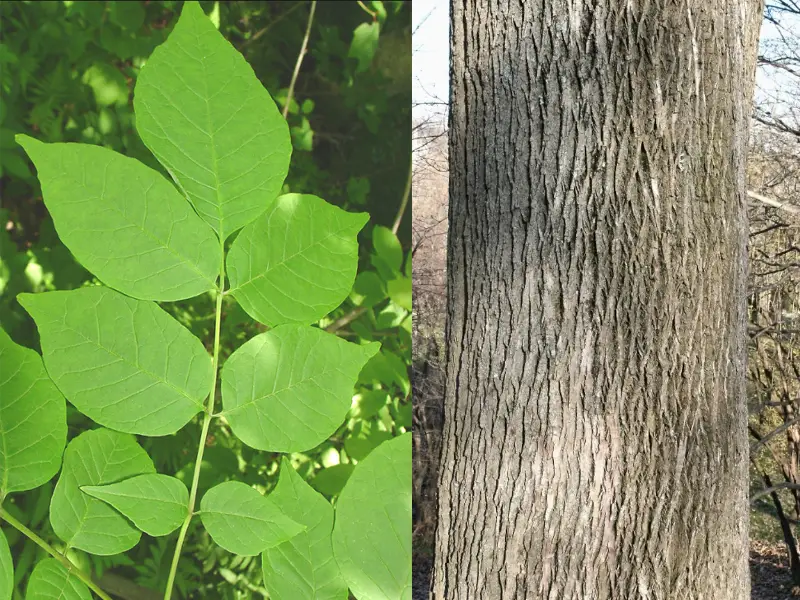
The White Ash, or Fraxinus americana, is a prominent tree native to East Texas, renowned for its distinct diamond-shaped bark and significant economic value. Its wood is highly prized in the furniture industry for its strength and flexibility.
White Ash trees feature compound leaves, typically with five to nine leaflets, each exhibiting a dark green color that turns to stunning purples and reds in the fall.
Recognizing the White Ash is facilitated by its unique bark texture, along with the symmetrical arrangement and classic ash leaf structure. This tree not only beautifies landscapes but also supports Texas’s economic vitality through its versatile timber.
Blue Ash
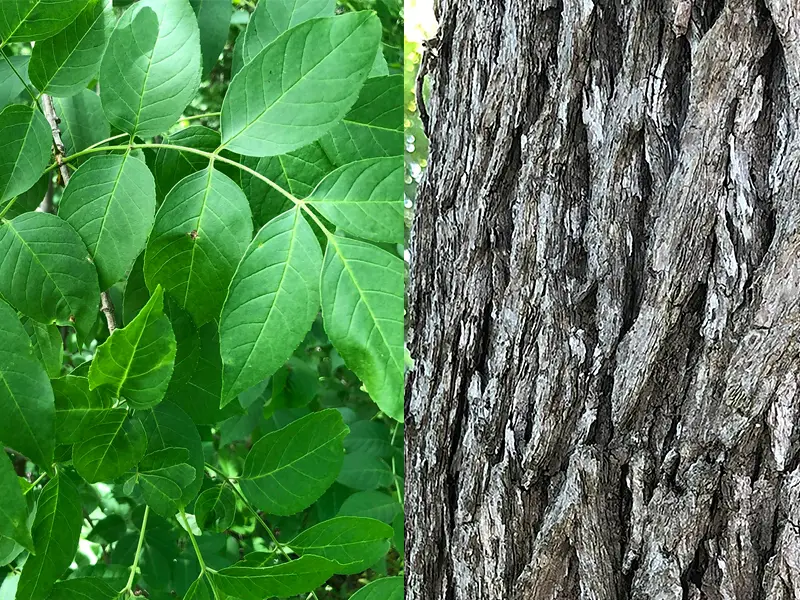
The Blue Ash, or Fraxinus quadrangulata, stands out in the Texas flora due to its rarity and distinctive features. Named for the subtle blue hue in its ash-gray bark, this tree is often chosen for ornamental purposes in landscaping projects.
Blue Ash trees are easily identified by their square-shaped twigs and leaves which are compound, typically consisting of four to six leaflets. During autumn, the foliage transforms into striking shades of yellow, adding to its visual appeal.
The blue tint in the bark, coupled with its unique twig shape, makes the Blue Ash a notable and attractive addition to diverse landscapes.
Arizona Ash
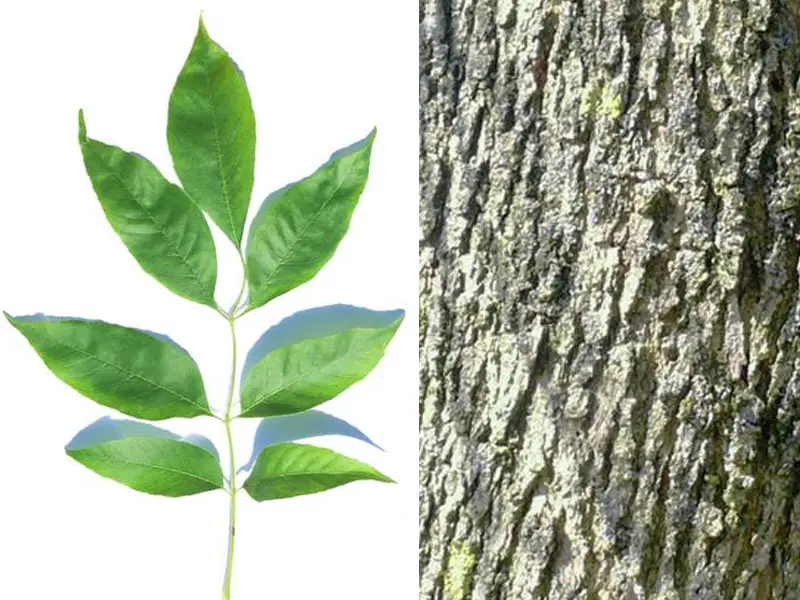
The Fraxinus velutina, or Arizona Ash, is a plant that grows well in West Texas’s dry regions and is remarkably drought-tolerant. This tree, which is easily identified by its compound leaves, is a popular species for landscaping work in arid climates because it provides abundant shade.
Arizona Ash is a popular option for improving the appearance and usefulness of dry landscapes due to its resilience to extreme weather conditions. The Arizona Ash is a living example of nature’s tenacity and the usefulness of using native plants for landscaping in harsh climates because of its capacity to flourish in dry environments and offer plenty of shade.
Carolina Ash

Fraxinus caroliniana, the scientific name for Carolina ash, is native to the southeast and even reaches parts of eastern Texas. This tree, which is easily identified by its pinnately complex leaves, provides food and shelter to a variety of local species. Its leaves, which usually have five to nine leaflets, set it apart from other species of ash.
Besides, Carolina Ash is significant because it enhances biodiversity and habitat richness in ecosystems.
Texas Ash
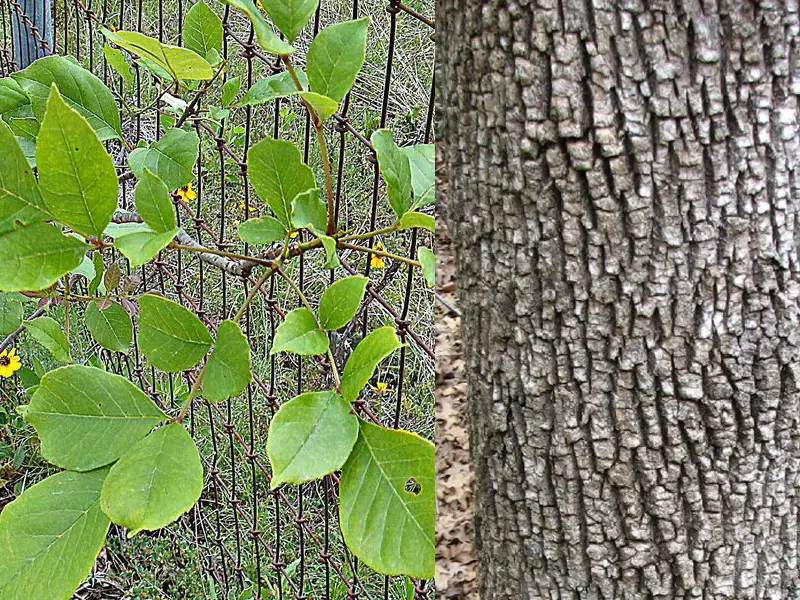
Fraxinus albicans, often known as the Texas Ash, is a hardy native of the South Texas and Edwards Plateau regions. This deciduous tree usually grows to a moderate height, with dense, dark green leaves contrasted with a pale bark.
Its pinnately complex leaves, which change to a vivid rainbow of yellows and purples in the fall, often have five to nine leaflets per stem. This tree is easy to identify by its distinctive leaf structure and seasonal color variations. Because of its resilience to arid conditions, it is a good addition to gardens resistant to drought.
Texas Ash, in its natural habitat, is a true xeriscaping champion.
Green Ash

Fraxinus pennsylvanica, or green ash, is a hardy species that grows widely throughout Texas and is prized for its brilliant fall foliage. This tree is a favorite in urban settings because of its extreme adaptability, which allows it to flourish in a variety of soil types and climates.
Its compound leaves have five to nine leaflets that are smooth on the edges and taper slightly at the base. In the fall, the leaves turn bright yellow.
Along with its adaptable leaves, the diamond-patterned bark and elongated samaras (winged seeds) are important traits of the Green Ash.
Black Ash
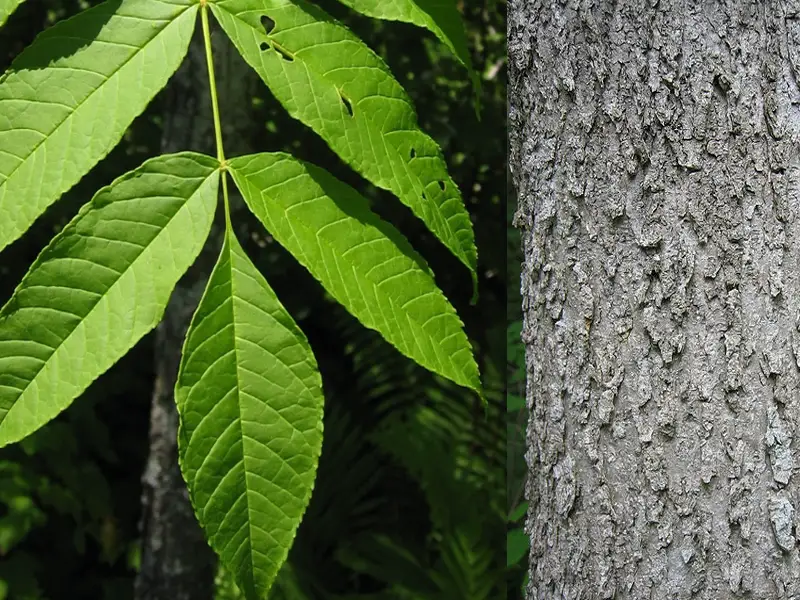
Although it is less common in Texas, the Black Ash, technically known as Fraxinus nigra, is a plant that does well in marshy or wetland areas. Significant significance is placed on its timber, especially in the basketry industry. The Black Ash is easily identified by its unique bark and compound leaves, which usually have seven to eleven leaflets. It makes a significant contribution to the ecosystems in which it lives.
Its existence promotes biodiversity and is an essential part of wetland environments, providing a home and food for a variety of species. The Black Ash is a rare species in Texas, yet it is a vital example of the state’s ecosystems’ rich and varied flora.
Oregon Ash
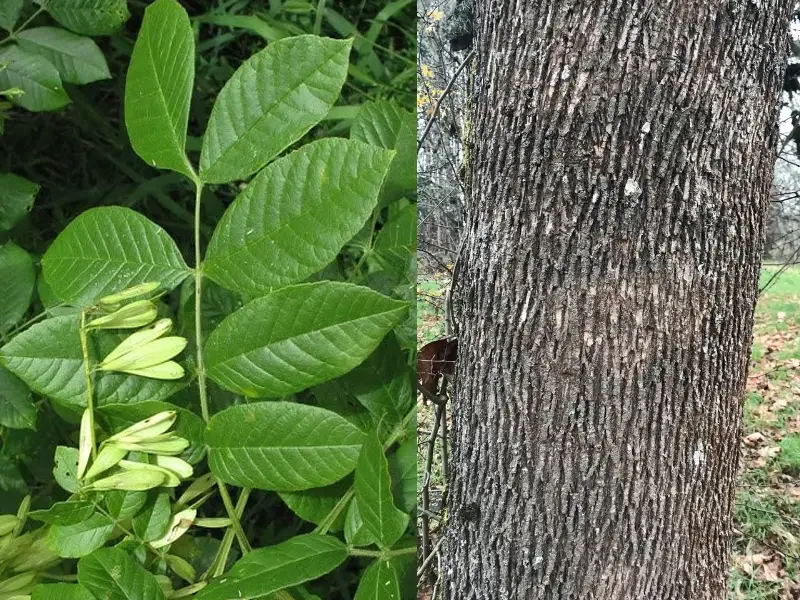
The Oregon Ash, scientifically known as Fraxinus latifolia, primarily thrives in the northeastern regions of Texas. This deciduous tree is characterized by its serrated leaves, which add to its distinctive appearance.
Recognizing the Oregon Ash is facilitated by its leaf structure and habitat preference. As a key species in riparian ecosystems, it plays a crucial role in supporting diverse aquatic and terrestrial wildlife populations.
Its presence along waterways helps stabilize banks, regulate water flow, and provide shade, making it an essential component for maintaining healthy riparian habitats in Texas.
Green Ash Hybrid
The Green Ash Hybrid, scientifically termed Fraxinus pennsylvanica x velutina, arises from the crossbreeding of Green Ash and Arizona Ash. This hybrid inherits the desirable characteristics of both parent species, showcasing resilience and adaptability. Its ability to thrive in diverse environmental conditions makes it a favored option for urban landscaping projects.
Identifying the Green Ash Hybrid can be challenging due to its mixed heritage, but key features include compound leaves and a range of growth habits inherited from its parent species. Its popularity in urban settings stems from its robust nature and ability to enhance the aesthetics of city landscapes while providing ecological benefits.
Mexican Ash
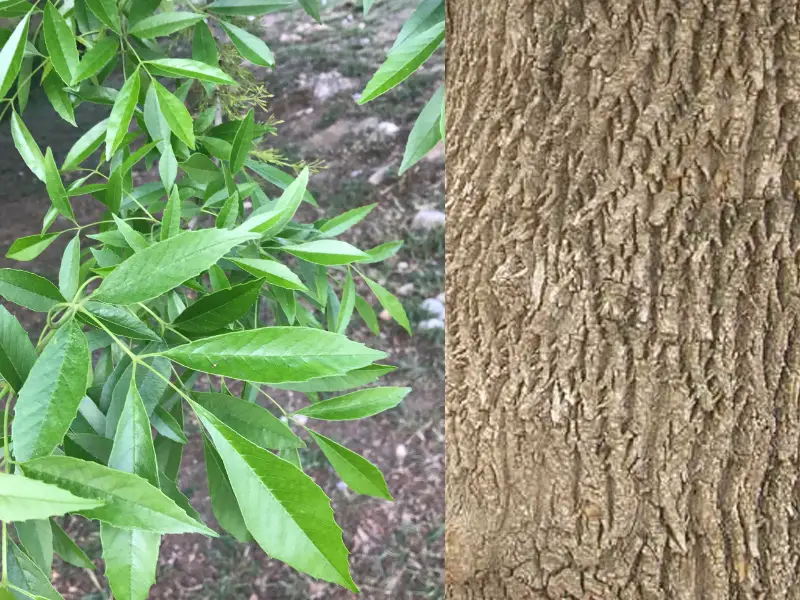
The Mexican Ash, scientifically known as Fraxinus berlandieriana, is native to the Rio Grande Valley in South Texas, thriving in hot and dry climates. This species is prized for its adaptability to harsh conditions, making it an ideal choice for erosion control and habitat restoration efforts in the region.
Identifying the Mexican Ash involves noting its slender, lanceolate leaves and its preference for arid environments. Its presence in the Rio Grande Valley plays a crucial role in stabilizing soil, preserving biodiversity, and supporting the local ecosystem’s resilience against the challenges of drought and erosion.
Chihuahuan Ash
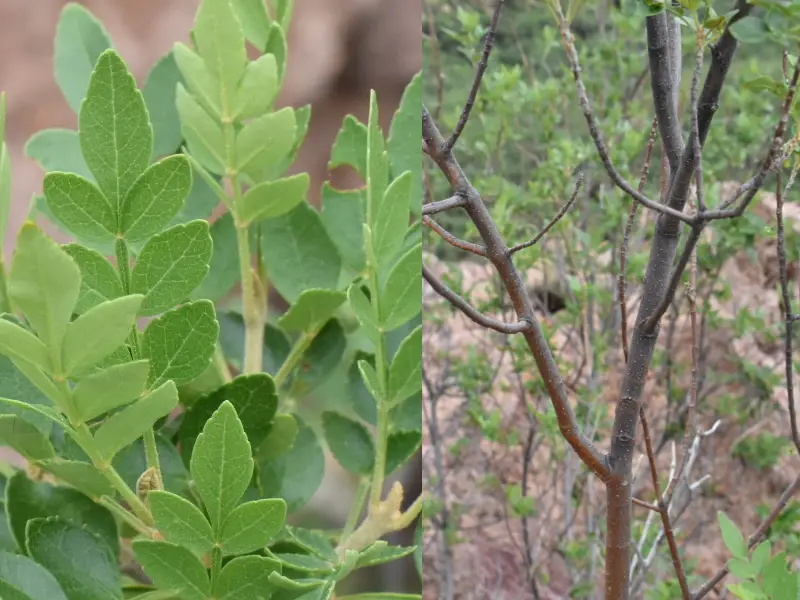
The Chihuahuan Ash, scientifically known as Fraxinus gooddingii, is indigenous to the arid expanses of the Chihuahuan Desert in West Texas. Evolved to thrive in dry climates, this ash species is crucial for stabilizing desert soils and supporting diverse wildlife habitats. Recognizable by its compound leaves and ash-gray bark, the Chihuahuan Ash stands as a testament to nature’s adaptability in harsh environments.
Its presence not only aids in soil conservation but also fosters biodiversity, serving as a sanctuary for numerous wildlife species in the challenging terrain of the Chihuahuan Desert region.
Ash Juniper
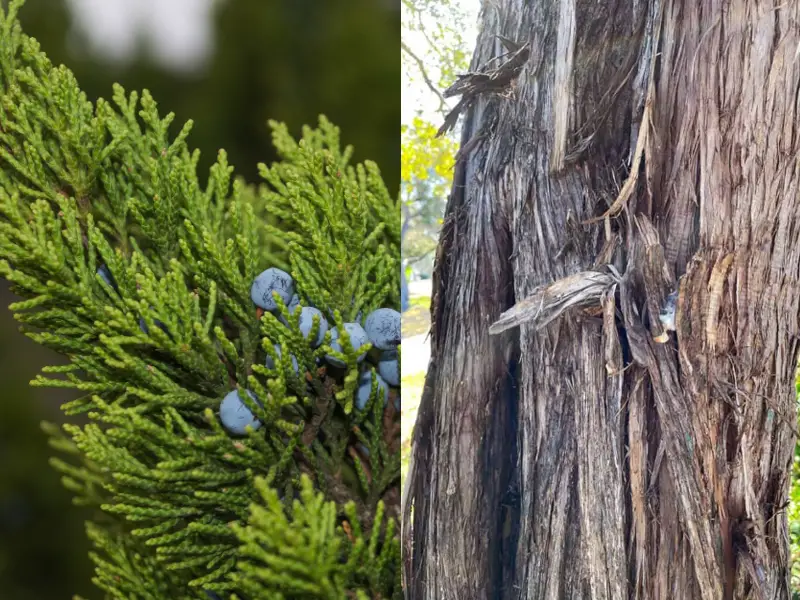
Ash Juniper, also known as Juniperus ashei or “Mountain Cedar,” is an evergreen tree prevalent in central Texas. Despite its common name, it is not a true ash tree but holds regional importance. Recognizable by its dense foliage and blue-green berries, Ash Juniper exhibits remarkable drought tolerance, thriving in the arid landscapes of Texas.
Its inclusion in the ash family is due to its ecological and cultural significance in the region. Although not a true ash, Ash Juniper plays a vital role in the ecosystem and is emblematic of the rugged beauty of central Texas landscapes.






